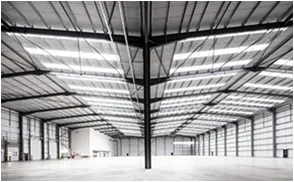- Afrikaans
- Albanian
- Amharic
- Arabic
- Armenian
- Azerbaijani
- Basque
- Belarusian
- Bengali
- Bosnian
- Bulgarian
- Catalan
- Cebuano
- Corsican
- Croatian
- Czech
- Danish
- Dutch
- English
- Esperanto
- Estonian
- Finnish
- French
- Frisian
- Galician
- Georgian
- German
- Greek
- Gujarati
- Haitian Creole
- hausa
- hawaiian
- Hebrew
- Hindi
- Miao
- Hungarian
- Icelandic
- igbo
- Indonesian
- irish
- Italian
- Japanese
- Javanese
- Kannada
- kazakh
- Khmer
- Rwandese
- Korean
- Kurdish
- Kyrgyz
- Lao
- Latin
- Latvian
- Lithuanian
- Luxembourgish
- Macedonian
- Malgashi
- Malay
- Malayalam
- Maltese
- Maori
- Marathi
- Mongolian
- Myanmar
- Nepali
- Norwegian
- Norwegian
- Occitan
- Pashto
- Persian
- Polish
- Portuguese
- Punjabi
- Romanian
- Russian
- Samoan
- Scottish Gaelic
- Serbian
- Sesotho
- Shona
- Sindhi
- Sinhala
- Slovak
- Slovenian
- Somali
- Spanish
- Sundanese
- Swahili
- Swedish
- Tagalog
- Tajik
- Tamil
- Tatar
- Telugu
- Thai
- Turkish
- Turkmen
- Ukrainian
- Urdu
- Uighur
- Uzbek
- Vietnamese
- Welsh
- Bantu
- Yiddish
- Yoruba
- Zulu
Dec . 11, 2024 09:23 Back to list
Designing Concrete Foundations for Metal Buildings
In recent years, metal buildings have gained immense popularity due to their versatility, durability, and cost-effectiveness. As these structures proliferate for various applications—such as warehouses, workshops, and even residential homes—the importance of a solid foundation cannot be overstated. A well-designed concrete foundation is crucial for ensuring the structural integrity and longevity of metal buildings. This article will delve into the essential aspects of designing concrete foundations specifically for metal buildings.
Understanding the Role of the Foundation
The foundation is the backbone of any structure. It not only supports the weight of the building but also transfers loads to the ground while providing stability against various forces, including wind, seismic activity, and soil movement. For metal buildings, foundations also play a critical role in controlling moisture levels and providing resistance against corrosion, which is vital for the longevity of metal components.
Factors to Consider in Foundation Design
1. Soil Analysis Before any design work begins, a comprehensive soil analysis is necessary. The type of soil affects both load-bearing capacity and drainage characteristics. Common soil types include clay, silt, sand, and gravel, each exhibiting different behavior under load. A geotechnical engineer can conduct tests to determine the soil’s bearing capacity, moisture content, and compaction characteristics, enabling the designer to select appropriate foundation types and depths.
2. Load Calculations Accurately calculating the expected loads on the building—both live and dead loads—is paramount. Live loads refer to variable forces that the structure must support, such as people, equipment, and snow, while dead loads are the fixed forces, including the weight of the building itself. Understanding these loads allows for sizing the foundation appropriately. Overestimation can lead to unnecessary costs, while underestimation can jeopardize structural integrity.
metal building concrete foundation design

3. Foundation Types The two primary types of concrete foundations used for metal buildings are shallow foundations and deep foundations. Shallow foundations, such as spread footings or slabs, are typically used when the soil has adequate bearing capacity close to the surface. Deep foundations, like piles or drilled shafts, are necessary when the upper soil layers are weak or unstable. The choice of foundation type will depend heavily on the results of the soil analysis and loading requirements.
4. Moisture Control Concrete is porous and can be susceptible to moisture infiltration, which may lead to structural deterioration over time. To combat this, it’s vital to integrate proper moisture control measures during the foundation design. This could include using moisture barriers, elevating the foundation above the surrounding soil level, and ensuring proper drainage systems are in place to direct water away from the structure.
5. Reinforcement and Durability To ensure the foundation can withstand various stresses and strains, reinforcing steel (rebar) is typically included in the concrete mix. The reinforcement must be placed according to detailed structural drawings that consider tension and compression zones. Additionally, the selection of concrete mix design is critical. It should be tailored to the environmental conditions, ensuring adequate strength and durability, especially in areas prone to freeze-thaw cycles or chemical exposure.
Compliance with Codes and Regulations
Another critical aspect of designing concrete foundations for metal buildings is compliance with local building codes and regulations. These codes outline the minimum design standards to ensure safety, stability, and performance. Engaging experienced architects and engineers familiar with these regulations is essential to navigate this process effectively.
Conclusion
In summary, the design of concrete foundations for metal buildings is a multifaceted process that requires careful consideration of various factors, including soil conditions, load requirements, moisture control, and adherence to building codes. A well-engineered foundation not only supports the structure effectively but also enhances its durability and longevity. When planning a metal building project, investing in a sound foundation design is vital to safeguarding the investment and ensuring the structure can withstand the test of time. By collaborating with qualified professionals and adhering to best practices, one can achieve a foundation that is truly the bedrock of any successful metal building project.
-
How Do Prefabricated Steel Structures Transform Modern Construction?
NewsJul.14,2025
-
How Do Prefabricated Metal Buildings Redefine Modern Construction?
NewsJul.14,2025
-
How Do Prefab Insulated Metal Buildings and Steel Structures Revolutionize Modern Construction?
NewsJul.14,2025
-
How Do Pre - Engineered Steel Structures Redefine Modern Construction?
NewsJul.14,2025
-
Advancing Modular Construction with Prefabricated Metal Structures
NewsJul.14,2025
-
Advancing Industrial Infrastructure with Prefabricated Steel Solutions
NewsJul.14,2025
Products categories
Our Latest News
We have a professional design team and an excellent production and construction team.












